HACKSAW RIDGE Review
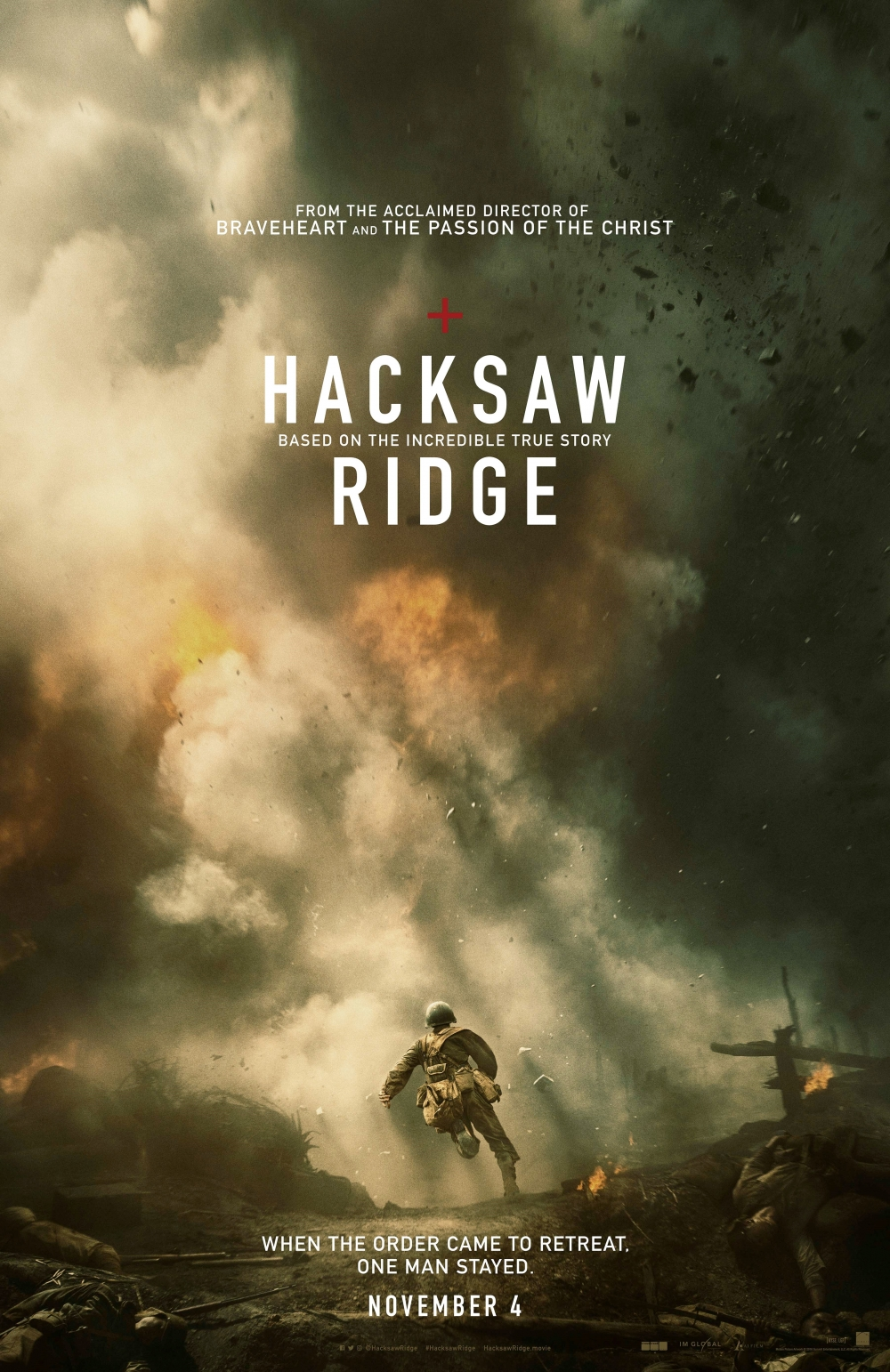
Director: Mel Gibson
Genre: War Drama
Year: 2016
Andrew Garfield is an idiot. After earning a reputation with his breakout as Eduardo Saverin in THE SOCIAL NETWORK, he swiftly squandered it by tarnishing Toby Mcguire’s era-defining portrayal of Spider-Man in the utterly disappointing reboot, THE AMAZING SPIDER-MAN. Garfield’s Peter Parker was a classic nerdy introvert; you know, he skateboards, dabbles in film photography, and is totally hot. Following Sony’s abandonment of the reboot series, he’s stayed relatively quiet in the world of cinema and appears to be at an early career crossroads. Out of all the potential choices, making his next project the lead role in Mel Gibson’s dull, clichéd, and offensive new film HACKSAW RIDGE is perhaps the most idiotic.
Fittingly, Garfield plays the dim-witted protagonist Desmond Doss, who bumbles and stutters his way through Gibson’s first feature in a decade. Half the time he can’t even muster up a reply to whoever he’s talking to, only providing a warm, doofus smile in lieu of conversation. The topics he does manage to be competent about are limited to his subservient 1940s fiancé and the Holy Bible. Doss is dedicated to serving in the United States Army during World War II but vehemently refuses to even touch a firearm due to his steadfast faith, with a particular focus on the sixth commandment (“thou shalt not kill”). This dunce-like hypocrisy proves to be the character’s defining trait as well as the primary conflict — rendering the opening a redundant slog. The characters around him (as well as members of the audience) are often flabbergasted at his lack of logic.
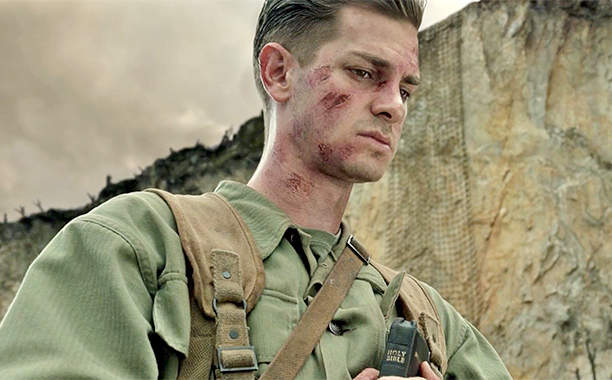
And equally flabbergasted at his ability to keep his hair so pristine in combat
There are essentially two distinct films within HACKSAW. The first is a run-of-the-mill “good-old-boy growing up in rural Virginia” story that you’re more likely to catch on Lifetime than in a modern cinema. It provides Doss’s backstory: an alcoholic WWI veteran of a father, a mother who isn’t allowed any qualities aside from being shamelessly domesticated, a competitive relationship with his brother, and one of the most cringeworthy meet-cutes ever put to celluloid. In slow motion, Doss falls in love with nurse Dorothy Schutte at first sight (yep, he hits on her at work), kisses her without consent during their first date (yep, she inexplicably forgives him immediately), and earns her devoted love after just their second date (yep, she loves him because he called her beautiful a sufficient number of times). Despite the male-centricity, this sequence is likely to be heralded as the “romance for the ladies” section, standing in contrast to the “violence for the boys” sequences that constitute the second half of Gibson’s Americana jerk-off.
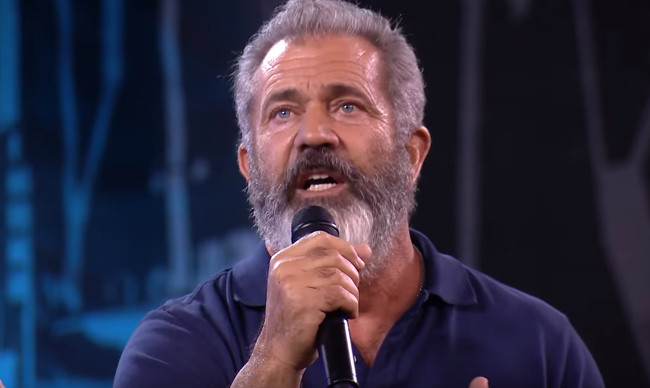
“O” face pictured here
As with most contemporary war movies, HACKSAW’s action sequences owe a great deal to the iconic opening of SAVING PRIVATE RYAN. The shaky handheld footage, intended to mimic that of a battlefield cameraman, is shot at a high shutter speed and ruthlessly cut up to distract and disorient the viewer. Smoke and dust obscure the frame so that the enemies, in this case Japanese soldiers, are invisible. The perspective regularly shifts between Doss’s entire battalion in combat and Doss himself, who scrambles to provide medical assistance to his horribly injured comrades. And like SAVING PRIVATE RYAN, it is violent. Extremely violent — it makes Spielberg’s action look tasteful and nuanced by comparison. But HACKSAW isn’t violent in a SAW way, where the gore is gross but excessive enough to dismiss as hyperbolic. It’s violent in a highly realistic way, where the mangling of a limb or impact of a bullet is perfectly appalling. And to what end? Beyond mismatching the tone of the first hour, the content of the battle scenes don’t have a discernible point other than creating fodder for nightmares. There’s an argument to be made that the aim is to replicate the ferociousness of war, but if that were the case, it wouldn’t be so damn one-sided.
Never does Gibson allow the audience to empathize with the Japanese, who are experiencing the same atrocities as the American soldiers (the pilot to THE PACIFIC and the cataclysmic reveal in THE THIN RED LINE show it can be done). Instead they are demonized — called “monsters” who “never stop.” Every shot of a Japanese soldier is accentuated by flute instrumentation in the score, differentiating them as ‘the bad guys.’ When an American torches a row of Japs with a flamethrower, it’s portrayed as completely victorious. Upon the Army’s inevitable victory, a short scene depicts a Japanese commander stabbing himself in practice of the ancient seppuku ritual; even this attempt at cultural understanding leaves a bad taste from the detached fashion in which Gibson directs it. Over half a century away from WWII, with widespread knowledge of the inhumane Japanese internment camps and America’s own imperialist identity, it’d be refreshing if this WWII movie did not glorify violence and victory — especially since the story is centered around a pacifist. The director of THE PASSION OF THE CHRIST and BRAVEHEART is probably not the guy to do it.
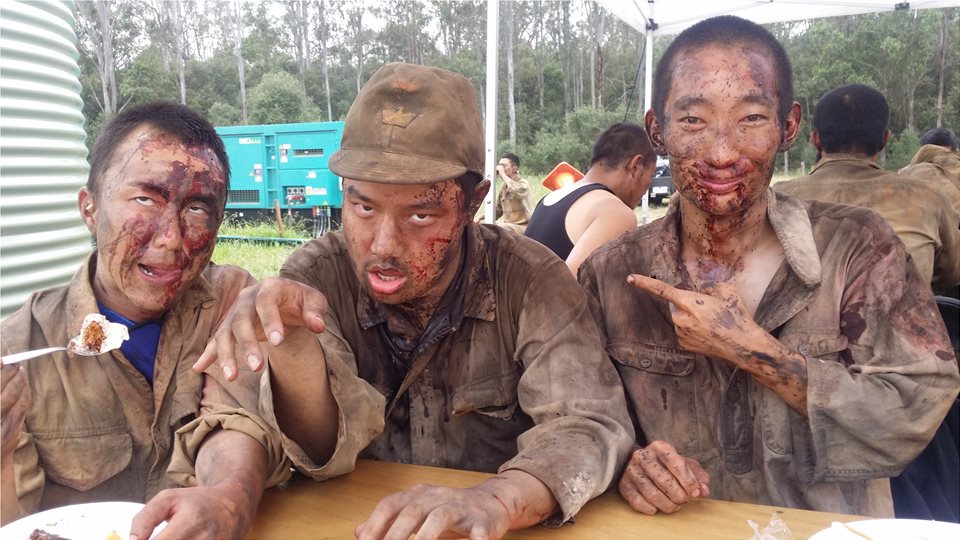
At least they had a good time off-camera
The only thing more exalted in this film than violence is A Higher Power. Gibson has been quoted that he believes Damien Doss’s real heroism (there is a true story in the film somewhere, underneath all the Hollywood glaze) is not only admirable, but can be attributed to his devotion to God. That’s a nice sentiment from the director — if HACKSAW didn’t already remind the viewer of God’s presence every five minutes. Cross-like imagery is peppered throughout the piece and full story beats are given to Doss’s obsession with his Bible, like when his entire battalion delays an invasion to let him finish praying. There’s nothing inherently wrong with a strongly religious piece of art, but the blatant, lazy presentation is indicative of the way the entire film is made.
Verdict: Do Not Recommend


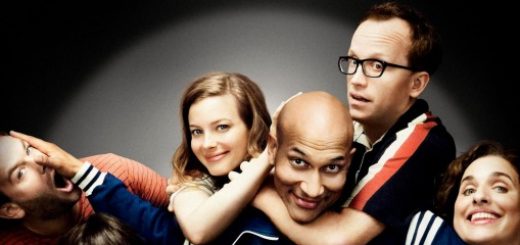

This is such a mean-spirited review.
“Andrew Garfield is an idiot.” What a nice way to kick things off. You then go on to slam the violence level because war is such a nice, cushy thing. We better pay tribute to history and the millions of people who died by easing up on the violence and portraying a more family friendly version of war.
You then criticize the fact that the American soldiers don’t have the nicest things to say about the people they’re fighting? What do you think soldiers during that time were saying?
Looking through your post history, you’ve slammed a number of critically-acclaimed movies, which I imagine is just to go against the grain. Obviously, it’s fine to dislike a movie, but the vitriol is completely unnecessary.
The issue is that there is no through line between what the film is trying to say and how it’s saying it. Of course soldiers were saying horrible things about their enemies – but that doesn’t mean we have to agree with those statements (many soldiers also empathized with those from other nations as they aren’t the ones making the decisions, more common in WWI than II but still)
I’m not asking for a family-friendly version of war, my point was that the protagonist of the film claims to hate violence and pacifism seems to be something they’re advocating for, yet the film glorifies violence. It revels in the blood and guts.
It’s all about cinematic language. It’s beyond the realism of the war – the composition of the shots and how they are built together paints a picture of American soldiers valiantly defeating the Japanese with everything but a “hoo-rah” at the end. Are bloody battles – regardless of the outcome – really something we should be proud of?
Hey, you’re right! Next time we make a war movie, it should feature combatants throwing stuffed unicorns at one another. You know, just to keep it…. “modest”.